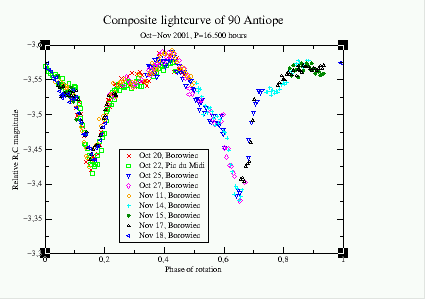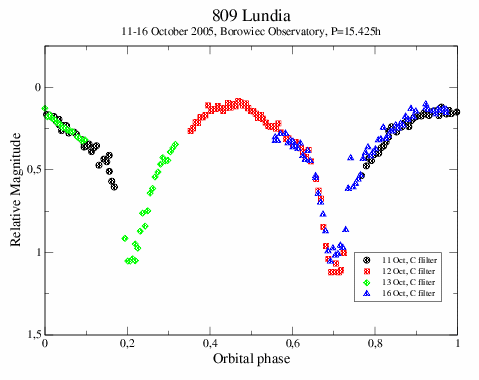
Originally created by Per Magnusson, at that time working at the Uppsala Observatory (Sweden), is currently maintained by Agnieszka Kryszczynska. It provides data on asteroid spin vectors (given as the geocentric, ecliptic pole coordinates) and, in many cases, sidereal periods of rotation and shapes.
The database is available in 3 files:
If you would rather access the source files, used to create the table, please get one of the packages:
After unpacking in a single directory you would get the following files: spin.tex, def.tex, note.tex, newtable.tex, endtable.tex, spin.dat. If you have TeX installed, you can then launch the command tex spin.tex and get the spin.dvi which can be converted to other formats like PostScript or PDF.We make CCD observations at several places:
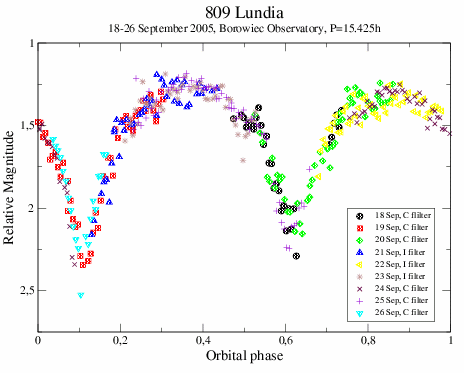
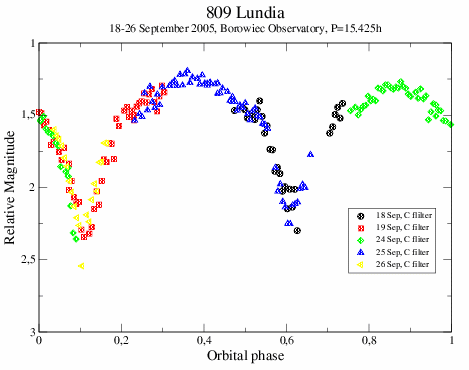
New data were obtained on 11-16 October, when the solar phase angle was
about 15 deg. The figure presented below is slightly different in shape from the one
from September, when the phase angle was about 25 deg.

On 15 March an occultation of a star by Diotima was observed from many
sites: among 29 reports there are 16 positive measurements. This lightcurve,
composited from data collected by T. Michalowski and R. Hirsch at Borowiec,
as well as F. Velichko in Kharkov, should allow extrapolation of asteroid
brightness to the moment of actual occultation.
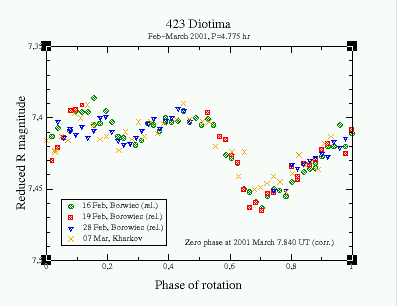
This asteroid is a target of the Japanese space mission, Muses-C. It is
being observed from many sites and the first data come from the beginning of
December 2000. Here we present the composite lightcurve obtained by F. Colas
and T. Kwiatkowski at Pic du Midi Observatory.
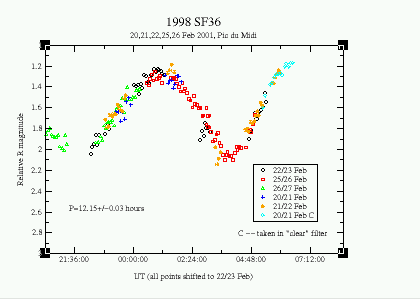
Adaptive optics observations of Antiope, performed in August 2000 with the Keck telescope showed that this object is in fact a binary asteroid. It consists of two equal-size bodies, each about 80 km across, orbiting each other during 16.5 hours.
Photometric observations of 90 Antiope, obtained in December 1996 in Ole Romer Observatory in Denmark (Hansen et al., 1997, Minor Planet Bulletin 24, 17) revealed a typical, binary-star lightcurve with occultations. At that time, however, the binary nature of Antiope was unknown.
To search for possible occultations in the Antiope binary system during
the Autumn 2000 opposition, we have preformed CCD photometry of this
asteroid from Borowiec and Pic du Midi observatories. Results, obtained by
Tadeusz Michalowski (Poznan Observatory) and Francois Colas (IMCCE) are shown
below as a composite lightcurve.
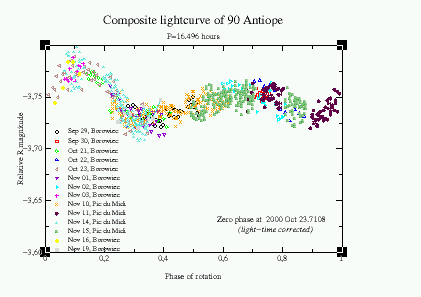
New observations of Antiope at its December 2001 opposition are currently
on. Preliminary composite lightcurve from 9 nights in Oct/Nov 2001 is shown
below. It was prepared from observations of Tadeusz Michhalowski (Poznan
Observatory) and Francois Colas (IMCCE).
